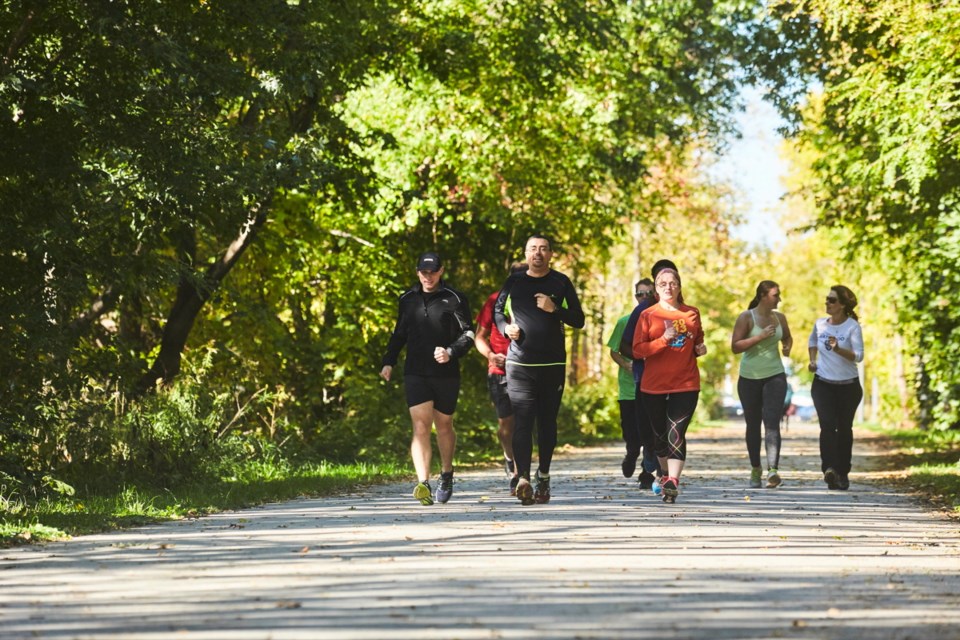For decades, John Stanton was a two-pack-a-day smoker who spent his time working and taking care of his family.
“I never thought about taking care of myself,” he said.
A three-kilometre fun run with his sons in 1981 was the catalyst for making a change.
“At first I just wanted to lose weight, so I started to run,” said Stanton, who founded the Running Room — a runner’s shop and meeting place — in Edmonton in 1984.
“Then I saw the benefits it brings and realized I had to quit smoking to go further.”
More than 30 years and many marathons later, Stanton is using what he learned to help others quit smoking and get in shape.
He developed Run to Quit, a program for smokers wanting stop or cut back, in partnership with the Canadian Cancer Society and the Public Health Agency of Canada.
The Running Room stores in Victoria and Nanaimo are hosting Run to Quit programs starting Monday.
“It’s a 10-week program that very gradually builds on how to run and running,” Stanton said.
Participants work up to running five kilometres while receiving nutrition and smoking-cessation tips in a supportive group atmosphere, he said.
“We’ve had some incredible results.”
The program started in 2016 with 1,000 participants in six provinces who joined online and in-store clinics ranging in cost from about $40 to $70.
Six months after they completed the program, 83 participants were interviewed.
Forty per cent said they had quit smoking and 91 per cent said they had cut back. Almost half became avid runners and 97 per cent said the program helped them exercise more.
“Many smokers are Type-A types. We need to channel their energy elsewhere and running does that,” Stanton said. “The groups are no judgment and very supportive.”
Stanton said they typically try to arrange for a former smoker to mentor the group, but they couldn’t find one at the Victoria Running Room.
“Victoria smoking rates are a lot lower than the rest of the country. But Nanaimo is higher [than Victoria],” he said.
According to recent surveys, smoking rates in Canada are going down. In 2014, Statistics Canada reported that 18.1 per cent of adults smoked regularly. The next year, the Canadian Community Health survey said 17.7 per cent of youth and adults were smokers.
British Columbia had the lowest rates in both studies, at around 14 per cent.
“While quitting smoking is the biggest goal for most Run to Quit participants, we know that staying active is important to reducing the risk of chronic diseases such as cancer,” said Lyz Gilgunn, health promotion co-ordinator at the Canadian Cancer Society’s B.C. and Yukon division.
“We were happy to see that participants really embraced exercise.”
For more information, go to runtoquit.com.



